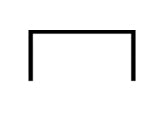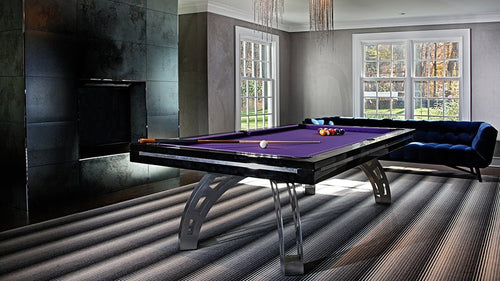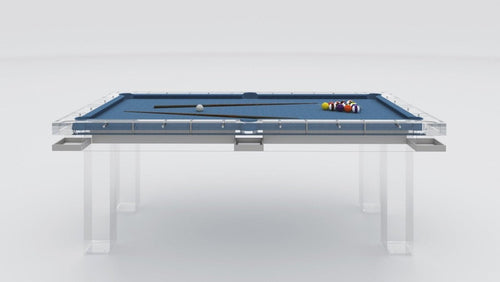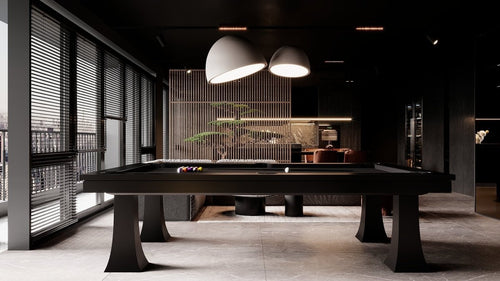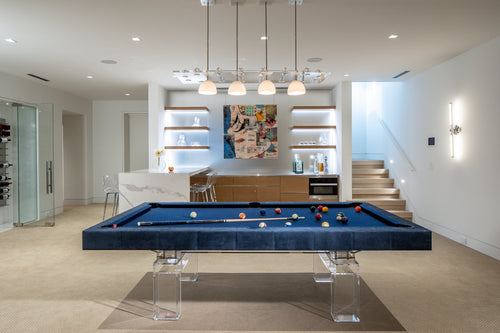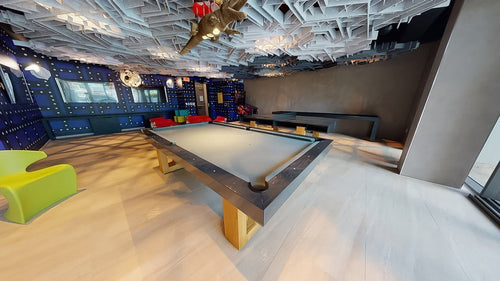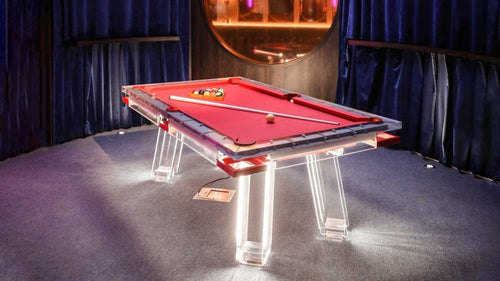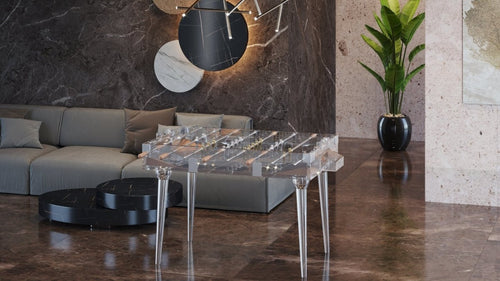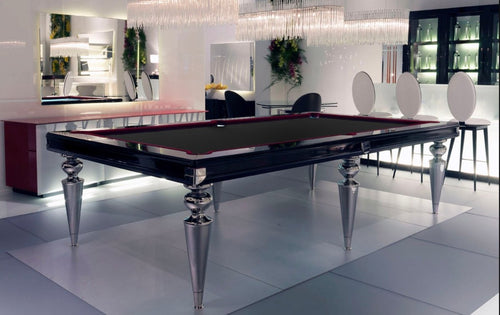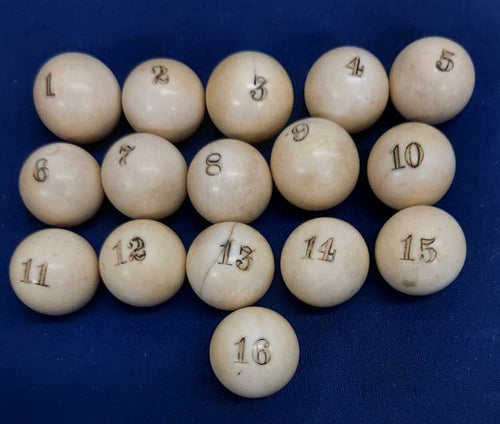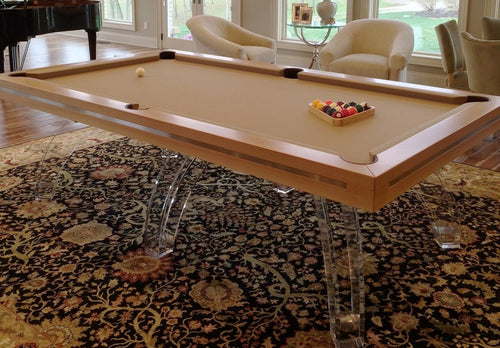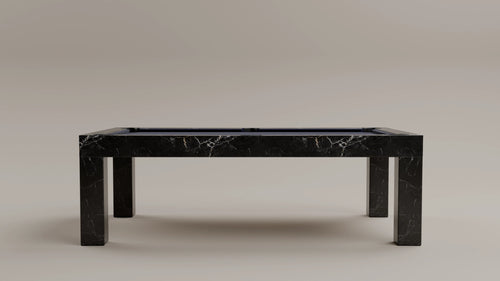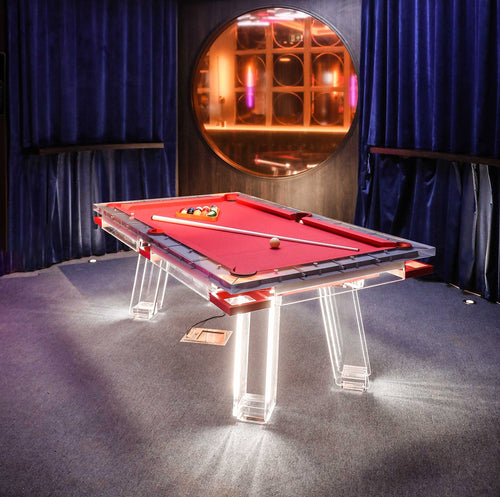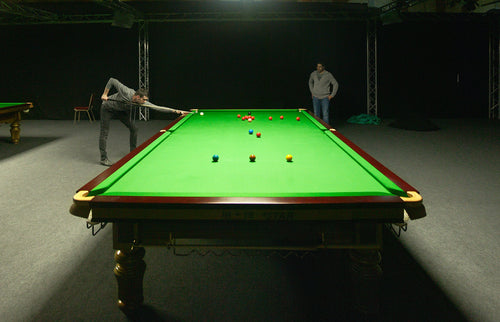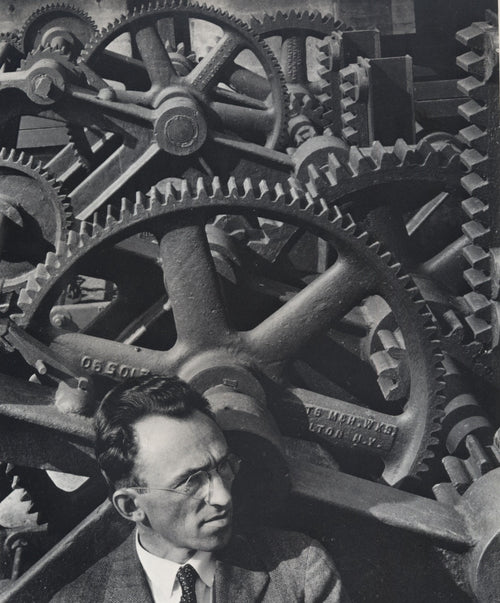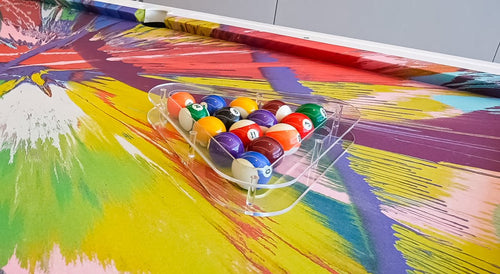Enjoy our modern designs
A reliable, repeatable way to send the cue ball across the table after a half-ball hit near the side rail—so you plan shape, breakouts, and safeties instead of guessing.
When you’re playing pool, some of the toughest shots happen when the cue ball needs to travel across the table after striking a ball near the side rail. Without a system, it’s easy to lose control—coming up short, scratching, or ending up out of position. The four-diamond shift system gives you a dependable baseline for these patterns.
This system predicts cue-ball paths for slow-rolling, half-ball hits near the side rail. Once you internalize it, you’ll have a high-confidence tool for position play, breakouts, and safeties.
The Core Idea: Four-Diamond Shift
- With a slow-rolling half-ball hit on an object ball near the side rail, the cue ball shifts about four diamonds across the table.
- Reference alignment: center of cue ball through the edge of the object ball, traveling parallel to the short rail and perpendicular to the long rail.
At slow speeds, rail rebound + cut-induced throw are consistent, so you get a stable, repeatable cross-table line you can plan around.
Ball Position and Adjustments
The rule is most accurate with balls frozen or very close to the side rail. Adjust as the object ball moves off the cushion or as the cut changes:
- 1 diamond off the rail: add ~1 diamond (≈ five diamonds total).
- 2 diamonds off: add ~2 diamonds; you’ll need a bit more speed to hold the line.
- Thinner than half-ball: expect fewer diamonds — quarter-ball ≈ 3, eighth-ball ≈ 2.5.
Drill fractions (½, ¼, ⅛) at different rail distances to see how contact fullness + distance compound.
Speed Control
- Slow speed: cue ball tracks the four-diamond baseline.
- More speed: cue ball travels “long,” overshooting the baseline.
- Too soft: the ball curves forward early and comes up short.
Use speed to “trim” shape—softer to land earlier, firmer to reach a breakout window.
Angle of Approach
- Straight into the rail → standard four-diamond shift.
- Half-diamond approach change → ~1 diamond difference in the cross-table path.
- Full-diamond approach change → ~2 diamonds difference.
Think “one diamond of cue-ball shift per half-diamond change in approach.”
Adding Side Spin
- 11:00 → ~1 diamond shorter.
- 1:00 → ~1 diamond longer.
- 2:00 → ~2 diamonds longer.
- 3:00 → ~3 diamonds longer.
- 4:00 (with drag) → ~4 diamonds longer; reaches deep-corner positions.
- Reverse shortens and slows; running lengthens and carries.
Combining Effects
- Ball farther from rail → add diamonds.
- Speed change → shorten/lengthen.
- Approach angle → ± diamonds per half-diamond change.
- Side spin → fine-tune the endpoint.
Quarter-ball hit angled ½-diamond off straight ≈ 2.5 diamonds up-table, minus ~1 for the angle → ~1.5. Add right English at 2:00 to push back out for a breakout or shape.
Practical Game Uses
- Position play: land in precise zones for the next shot.
- Breakouts: reach and open clusters predictably.
- Safeties: hide the cue ball behind blockers.
- Avoid scratches: thin the hit or add reverse to stay clear.
How to Train the System
- Set up object balls near the side rail at different diamonds.
- Drill slow half-ball hits and confirm the four-diamond shift.
- Increase speed to see the line lengthen.
- Add side spin and track how paths bend.
- Combine variables until your predictions are automatic.
Every table is unique. Calibrate for cloth speed, rail bounce and conditions.
The Bottom Line
The four-diamond shift system is a practical framework for cross-table cue-ball control. Master how speed, angle, spin, and ball distance nudge the result, and you’ll stop guessing and start placing.

